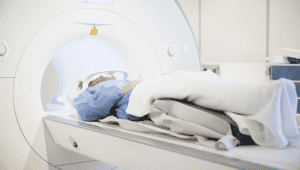When approaching Magnetic Resonance from the point of view of quality, the subject brings several aspects that deserve consideration. The first of these involves the strength of the magnetic field, which must be at least 1.5 Tesla or 3 Tesla. However, sometimes, just screening is not enough to guarantee the quality of the exam. For example: a device with a larger screen size (3T) does not necessarily imply a higher quality than a 1.5T device, as the former may be older and have more artifacts, impairing the quality of the exam.
Another point to be highlighted is the quality of the coils. Even if you have two similar devices, the use of a dedicated coil can be a decisive factor in the results. In addition, there are numerous techniques (sequences and parameters) that are decisive for the examination to be effective, and they often have to be directed towards the clinical suspicion and not only towards the body region of interest. In summary, the quality of the MRI exam depends on multiple factors and, although this is also true in CT, there are more complex variables that make the exams more heterogeneous.
Each MRI exam, in its various possibilities, has a dedicated minimum protocol so that it is technically adequate, going beyond the technical characteristics of the equipment, dedicated coils and, obviously, a trained professional with experience in that study.
When the clinic or service is interested in having an MR device to perform exams with adequate quality, it is also important to follow the parameters and protocols that are being recommended by the main organizations, most of which are found for free in the literature. To perform a prostate MRI exam, for example, 1.5 or 3T devices can be used, as long as they are of adequate quality, and the specialist must maintain the parameters at the minimum quality levels. Such parameters can be found (in the example above), in the PI-RADS guideline, on the website of the American College of Radiology (ACR), or on the website of the European Society Urogenital Radiology (ESUR), being necessary to verify if the device has the capacity to be able to carry out such an examination.
Another relevant point in the quest for maximum quality in Magnetic Resonance is patient preparation. In the case of a prostate exam or even for the evaluation of endometriosis, if there is no adequate preparation of the bowel or adequate distension of the vagina is not obtained, the exam may be impaired.
Still in the pelvis, another illustrative example is the examination to assess pelvic floor weakness: if there is no specific guidance for the patient (with a very detailed explanation of the maneuvers she will need to perform) the quality of the examination may be impaired, not because the equipment , the parameters or the doctor are insufficient, but because the instructions to the patient were not done correctly.
Those who seek excellence in MRI (whether at a technical, biomedical or even medical level) should always keep up to date with the literature, through the use of dedicated protocols for that particular exam, which is generally available in most parts of the world. of international sites for free.
The Brazilian College of Radiology and Image Diagnosis, through Quality Seals, can answer any questions about parameters and techniques that professionals may have. In each of the areas that make up the CBR Quality Seals, there are commissions composed of several specialized radiologists who can assist in these protocols.
Finally, it is important to emphasize that patients (and requesting physicians) actively seek the quality of the exam, and can inform themselves about this aspect through the CBR Quality Seals program. This program evaluates from the equipment, the images, to the final report to verify that all points are adequate. Only after this evaluation, the clinic has the endorsement to show that its quality is recognized by the CBR.




